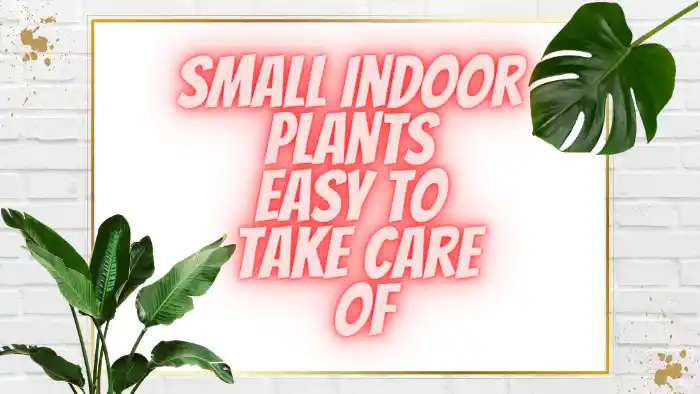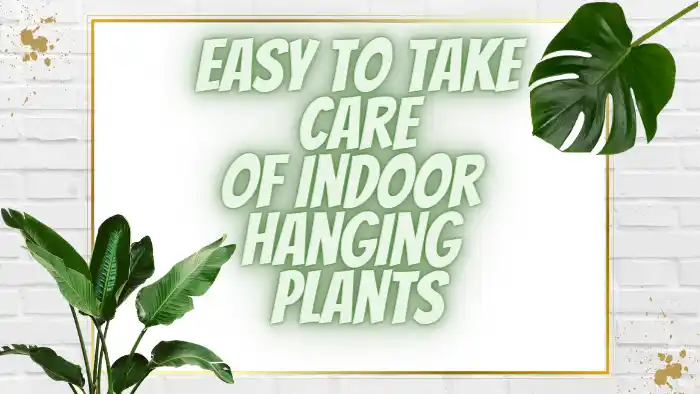Having plants in our home can be a great way to add life and color to any room, but taking care of them can sometimes seem like a daunting task. Fortunately, there are small indoor plants that require minimal care, such as watering and occasional pruning. These easy-to-care-for options come in all shapes, sizes, and colors and make great additions to any space.
Pros:
- Small indoor plants require less space than larger indoor plants
- They are easy to take care of, generally requiring minimal watering and occasional pruning
- Their foliage can help purify the air by absorbing pollutants
- They can add a touch of greenery and life to any home or office environment
- They can be relatively inexpensive compared to bigger plants.
Cons:
- Some smaller plants may not survive in darker environments with limited natural light
- Some may require more frequent watering than expected
- Limited varieties to choose from depending on the size of the plant
- May not provide enough shade from direct sunlight for other nearby plants if kept close together
- May need regular repotting and trimming to maintain their shape and size.
Small Indoor Plants
Indoor plants can bring life and color to any space, no matter how small the area. Small indoor plants are an ideal addition for apartments and homes with limited outdoor space, providing a much-needed green touch that creates a feeling of calmness and serenity. Plus, they’re low-maintenance and require very little care; all you need is a bit of sunlight or artificial lighting to keep them looking their best.
When selecting small indoor plants, there are several options available each with its own unique benefits. Succulents are perfect for anyone short on space as they don’t take up too much room yet still add natural beauty to the home. For a touch of greenery in tight corners, ferns offer lush foliage that requires minimal effort to maintain.
Types of Easy Care Plants
When it comes to decorating the indoors, plants can add a touch of life and color. Low-maintenance houseplants are an ideal option for those who want to bring nature inside but don’t necessarily have a green thumb. Small indoor plants that are easy to take care of will thrive in any home environment with minimal effort.
Peace lilies and snake plants are some of the most popular low-maintenance houseplants. These two varieties require little sunlight or water, making them perfect for any room in your home.
Spider plants also need very little light or water and are known for their air-purifying qualities, helping to remove toxins from the air within your home. Aloe Vera is another great choice as it only needs watering every three weeks and thrives on the natural light coming through windows or skylights – plus they’re great for minor skin irritations!
Choosing the Right Plant
When it comes to choosing the right plant for your home, there are so many options available. Small indoor plants can be a great way to bring life and color into your living space. However, not all plants are created equal. If you’re looking for something easy to take care of, here are some great small indoor plants that require minimal maintenance.
Succulents like echeveria and crassula offer a low-maintenance option for adding greenery to any room in your home. These hardy varieties thrive with minimal water and sunlight requirements, making them perfect for those without a green thumb. Additionally, they come in plenty of colors and shapes, allowing you to choose one that suits your style perfectly!
Potting and Soil Requirements
Small indoor plants are a great way to spruce up any room while adding greenery and life. But before you can bring in the perfect new plant, you need to understand potting and soil requirements for easy care of small indoor plants.
Pots made from ceramic or plastic are best for small indoor plants because they’re lightweight yet durable. Pot sizes should be proportional to the size of the plant; large pots tend to retain too much moisture and impede growth, while smaller pots dry out quickly making it difficult for roots to absorb nutrients.
When selecting soil, make sure it’s well-draining with plenty of organic matter like peat moss or composted bark that will help retain moisture without becoming waterlogged.
Watering Needs
Small indoor plants are a great way to spruce up any home. Not only do they look nice, but they can also reduce stress, improve air quality and even boost your mood. Taking care of small indoor plants is easy if you follow the right watering schedule.
When it comes to watering needs, small indoor plants need less frequent watering than larger plants since their roots don’t spread out as far in the soil.
Watering frequency depends on the type of plant and its environment; for example, cacti and succulents require more frequent watering than other types of houseplants because they store moisture in their leaves.
However, all small indoor plants should be watered when the top inch of soil feels dry to the touch – this will generally be every 5-7 days depending on how much humidity is in your home.
Advantages of Small Indoor Plants
Indoor plants are quickly gaining popularity for many reasons. For starters, they’re a great way to bring some life into your home without much hassle or effort! Small indoor plants are especially practical and easy to take care of – they can fit on any windowsill, desk, or table and require minimal care.
One of the main advantages of owning small indoor plants is their size. They require only a tiny bit of space, so you can easily squeeze them into any corner of your home without feeling cluttered or cramped.
Additionally, these types of plants don’t need as much attention as larger ones; with regular watering and enough sunlight exposure, they will thrive and live happily indoors. Furthermore, you don’t have to worry about them outgrowing their designated spot since they tend to stay small in size.
Conclusion: Enjoy Your Plants
Having plants in your home or office can be an incredibly rewarding experience. Not only do they add beauty to the environment, they also provide tangible benefits such as improved air quality and mental health.
Taking a few moments each day to nurture and enjoy your plants can bring much-needed relaxation and peace of mind. Plants are easy to care for and require little maintenance, making them a great addition to any home or office space. Add some life to your living space with houseplants today!
Frequently Asked Questions
What are the benefits of growing small indoor plants?
Growing small indoor plants can provide a variety of benefits. First, they can help purify the air in your home by removing toxins from the air and providing oxygen. This can be especially helpful for people who suffer from allergies or asthma. Second, plants can add a touch of beauty to any room.
They are also known to reduce stress and improve moods, making them great for creating a calming atmosphere in your home. Finally, growing plants indoors is an enjoyable hobby that can be both rewarding and therapeutic. It’s also a great way to get children interested in nature and gardening at an early age.
How do I take care of my small indoor plants?
Taking care of small indoor plants is easy and rewarding. Start by selecting a spot in your home that gets plenty of natural light but is not in direct sunlight. This will ensure that your plant receives enough light while avoiding too much heat. Once you’ve chosen the perfect spot, water your plant regularly according to its needs.
Most plants need to be watered once or twice a week, but check the instructions on your specific plant for specifics. Additionally, make sure to remove any dead leaves or flowers from the plant as they may attract pests or spread disease. Finally, don’t forget to fertilize your plant every couple of months with an organic fertilizer to give it a boost of nutrients. With these simple steps, you can keep your indoor plants healthy and thriving!
What are some of the best small indoor plants for beginners?
One of the best small indoor plants for beginners is the pothos. This plant is easy to care for and can thrive in a variety of environments, making it an ideal starter plant. Pothos are also known for their air-purifying properties, which can help improve the air quality in your home.
Another good option for beginners is the snake plant. These plants are hardy and require little maintenance, making them a great choice for those just starting out with indoor plants. Snake plants also have some air-purifying benefits, so they can help keep your home healthy.
Finally, philodendrons are a great choice for beginner gardeners. They’re easy to care for and don’t require much water or sunlight to thrive indoors. Philodendrons also come in a variety of sizes and shapes, so you can find one that fits your space perfectly.
What are the benefits of keeping small indoor plants?
Keeping small indoor plants can be a great way to add life and color to your home. Not only do they look great, but they also have numerous benefits for both your physical and mental health.
First, having plants in the home can help to improve air quality by filtering out pollutants and increasing oxygen levels. This can be especially helpful if you suffer from allergies or asthma. Additionally, caring for a plant can have a calming effect that helps to reduce stress and anxiety levels. The act of tending to the plant’s needs can also give you a sense of purpose and accomplishment which can boost your overall mood.
Finally, having plants in the home is also known to increase productivity and focus. Studies have shown that being around plants improves concentration and mental clarity, making it easier for you to complete tasks or work on projects. They also provide visual stimulation which helps to keep your mind active and engaged.
How do I take care of small indoor plants?
Taking care of small indoor plants is a great way to bring some life into your home. There are a few key things to consider in order to keep your plants healthy and thriving.
First, make sure you select the right type of plant for your environment. Different plants require different levels of sunlight and water, so it’s important to do research on the specific type of plant you’re looking for before purchasing it.
Once you have the right plant, make sure you place it in an area with plenty of natural light and avoid areas with too much direct sunlight or heat.
Second, give your plants enough water but don’t overwater them. Most small indoor plants need to be watered about once a week or when the soil feels dry to the touch. When watering, use room temperature water and make sure not to pour too much water as this can cause root rot.
What are some of the most common small indoor plants?
One of the most common small indoor plants is the pothos. Also known as devil’s ivy, this plant grows quickly and is very low-maintenance. It can easily be trained to grow up a trellis or along a wall. It also does well in both bright and low-light conditions.
Another popular small indoor plant is the snake plant. This tall, thin plant can tolerate a wide range of light levels and temperatures, making it an ideal choice for many homes. The snake plant also has air-purifying properties that make it an attractive addition to any room.
Finally, another popular small indoor plant is the peace lily. This easy-to-care-for tropical flower thrives in indirect sunlight and moist soil with regular watering. Its beautiful white flowers make it a great addition to any home or office space.
I am a Horticulture graduate and passionate gardener with expertise in identifying, growing, and caring for plants, trees, and seeds. With a focus on sustainable practices, they aim to promote environmental awareness and appreciation for the natural world.








